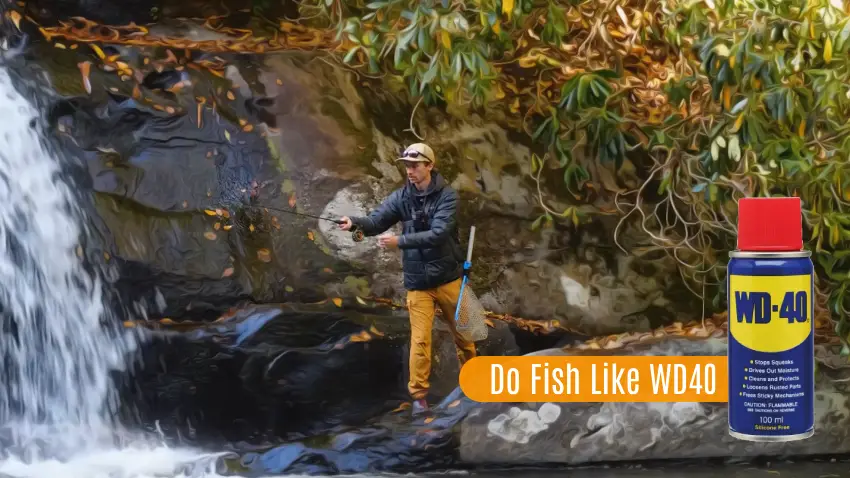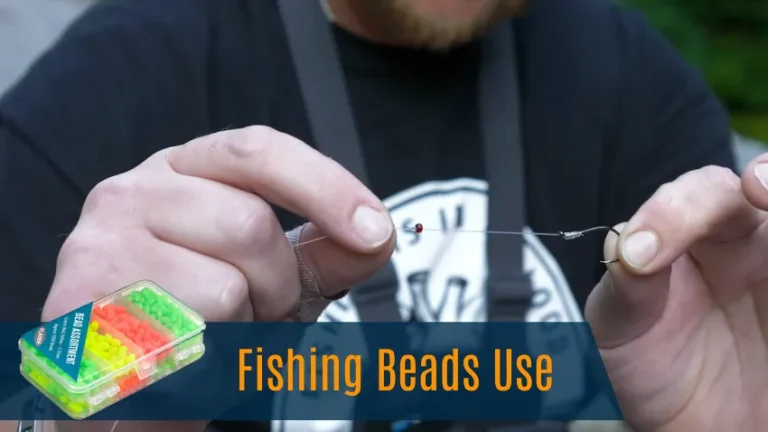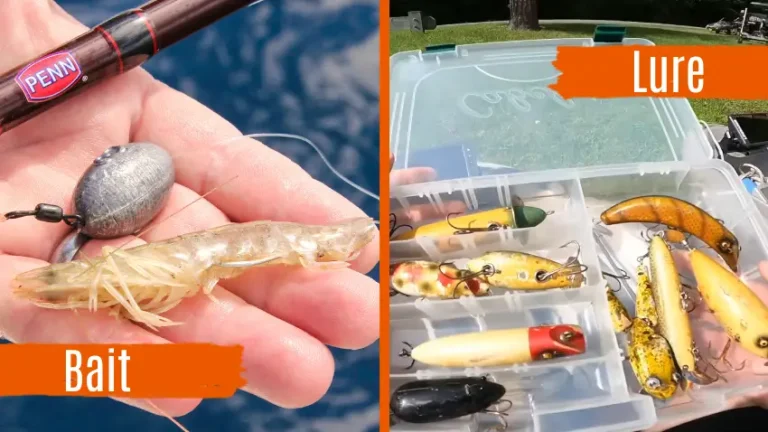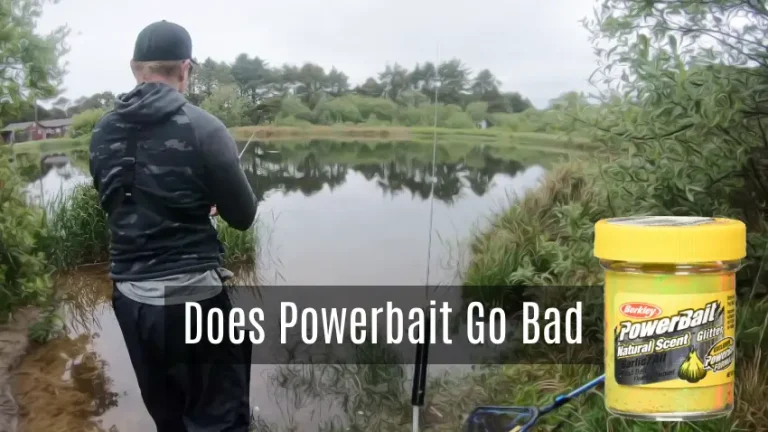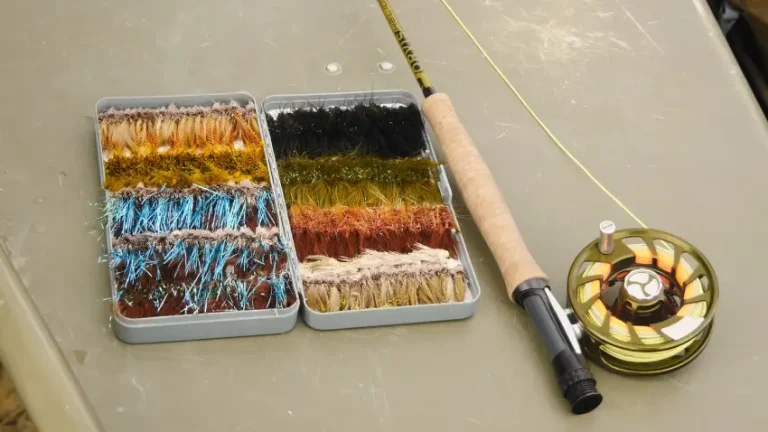Do Fish Like WD40: Find the Actual Truth
Fishing enthusiasts have used various types of bait and lure to attract fish for generations. However, the use of WD-40 as a fishing attractant has become a controversial topic.
So, if you’re wondering whether fish are attracted to WD40, the answer is no. This petroleum-based product cleans rust and other contamination from surfaces and doesn’t contain fish oil or anything fishy. In fact, the company explicitly states on its website that it doesn’t recommend using WD-40 as a fish attractant.
Also, using WD-40 as bait isn’t only discouraged but also unethical. The product isn’t intended for use in or around aquatic environments, as it can introduce foreign substances harmful to fish and aquatic ecosystems.
In today’s article, we will talk about why WD-40 isn’t a fish attractant. We will also discuss what can be used as an attractant for fish. So, uncover the truth behind this age-old angling myth.
Why Shouldn’t You Use WD-40 as an Attractant During Fishing?
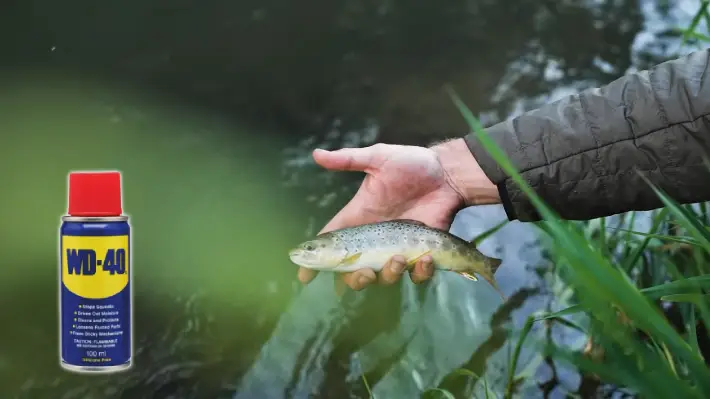
Using WD-40 as an attractant while fishing isn’t recommended for several reasons.
- Environmental concerns
- Toxicity
- Potential legal issues
- Unnatural scent
- Ethical concerns
1. Environmental Concerns
WD-40 is a petroleum-based product that contains chemicals that can have detrimental effects on the aquatic ecosystem. When WD-40 enters the water, it can contaminate the water and cause pollution.
The chemicals present in WD-40 can be toxic to fish and other aquatic organisms. They can disrupt their reproductive systems, impair their immune function, and even lead to death.
In addition, using large amounts of petroleum-based WD-40 can create a film on the water’s surface, preventing oxygen exchange and negatively impacting aquatic life.
2. Toxicity
Toxicity is a major concern when using WD-40 as an attractant during fishing. WD-40 isn’t designed for consumption by fish and other aquatic organisms, and prolonged exposure to this substance in the water can harm the aquatic environment.
Furthermore, the presence of WD-40 in the water can hurt the overall ecosystem, affecting not just fish but also other aquatic organisms such as insects, plants, and algae.
3. Potential Legal Issues
Be aware of potential legal issues when using WD-40 as a fishing attractant. Many states have regulations prohibiting using certain substances, including WD-40, for fishing. These regulations are in place to protect the environment and ensure the sustainability of fish populations.
4. Unnatural Scent
Using WD-40 as an attractant during fishing can deter fish due to its unnatural scent. Fish have a keen sense of smell and are highly sensitive to the odors in their environment.
WD-40, on the other hand, has a chemical odor that may not resemble anything fish encounters naturally. This unfamiliar scent can be off-putting to fish and may repel them instead of attracting them to your bait or lure.
5. Ethical Concerns
If you want to practice ethical fishing, avoiding using WD-40 as an attractant is important due to its potential harm to fish populations. WD-40 can create an artificial slick that can suffocate fish by clogging their gills when used on the water’s surface.
Also, the chemicals in WD-40 threaten aquatic organisms, leading to long-term damage to their health and reproductive abilities.
Where Should I Use WD-40 in Fishing?
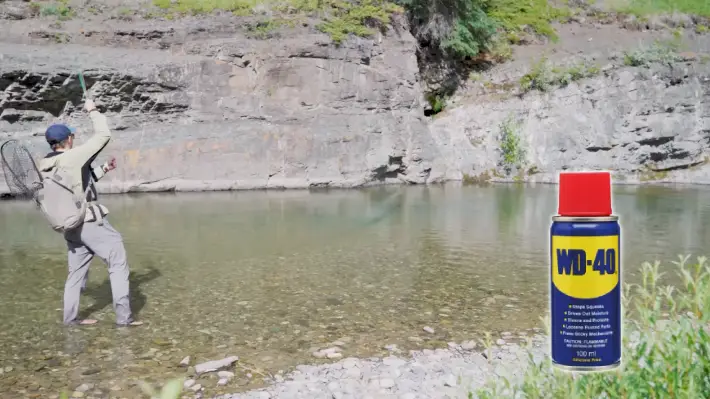
When fishing, WD-40 can be used in various ways to protect your gear and enhance your overall fishing experience.
A. Protecting Your Fishing Gear
To protect your fishing gear from rust damage, apply WD-40 to the metal components. The moisture, humidity, and water exposed to your gear can lead to corrosion and deterioration over time. Applying a thin layer of WD-40 creates a protective barrier that helps prevent rust formation.
B. Clean Your Gear
Regularly use WD-40 to clean your fishing gear and keep it in optimal condition. WD-40 is a versatile cleaner used on various parts of your fishing equipment.
When cleaning your reel, spray a small amount of WD-40 onto a cloth and wipe down the exterior, removing any dirt or saltwater residue. Be careful not to get any WD-40 on the line, as it may cause it to weaken or become less effective.
For fishing rods, lightly spray WD-40 on a cloth and wipe down the entire length, paying special attention to the joints and guides. This will help remove any debris and ensure smooth casting and reeling.
Also, you can use WD-40 to clean hooks, lures, and other metal components by spraying a small amount directly on the surface and wiping it clean.
C. Remove Grease and Fish Oil Stains from Your Clothes
Fishing clothes can be effectively cleaned with WD-40 by applying it to the affected areas. Simply spray or dab a small amount of WD-40 onto the stain, covering the entire affected area. Gently rub the WD-40 into the fabric using a cloth, ensuring it penetrates the fibers.
Allow the WD-40 to sit on the stain for a few minutes, allowing it to work its magic. Afterward, use a regular wash cycle to wash the garment as you normally would.
What Can I Use as an Attractant During Fishing?
There are several options you can consider to attract fish during fishing.
1. Bait and Lures
You can enhance your fishing experience by using bait and lures that fish naturally feed on, such as worms, minnows, or insects, or by using artificial lures that resemble prey fish. Different types of fish have different preferences for bait and lures, so research the species you’re targeting to choose the right ones.
Live bait is often very effective, as it mimics the fish’s natural food source. Worms are a common choice; they’re readily available and attract many fish species. Minnows are also popular, especially for predatory fish like bass and pike. Insects like crickets or grasshoppers can be used for certain species like trout.
On the other hand, artificial lures come in various shapes, sizes, and colors and can imitate specific types of fish or prey. They’re often designed to mimic the movement and appearance of injured or fleeing prey fish, which can trigger a predatory response in the target fish.
2. Fish Scents
Fish scents are designed to mimic the natural odors of prey and can be applied to your fishing bait or lures to increase their effectiveness. These scents are available in various options, including shrimp, crayfish, garlic, and more.
The idea behind using fish scents is to entice fish by stimulating their sense of smell, which is highly developed. When fish detect these scents in the water, it can trigger their predatory instincts, making them more likely to strike at your bait or lure.
Fish scents can be particularly useful in areas where fish are less active or heavily fished areas where they may be more wary. By incorporating fish scents into your fishing arsenal, you can increase your chances of success on the water.
3. Cut Bait
Consider cutting bait an effective attractant to attract fish during your fishing excursions. Cutting up fish or other natural prey items releases a strong scent that can lure fish, especially scavengers or predators. When using cut bait, choosing a fresh and oily fish, such as mackerel or herring, is important.
The scent of these fish can travel through the water and attract nearby fish. To prepare cut bait, remove the fish’s head, tail, and internal organs, and then cut it into small pieces. Make sure to use a sharp knife to ensure clean cuts.
Also, you can enhance the effectiveness of cut bait by adding a fish scent attractant or using a bait holder to keep the bait in place. Experiment with different types of cut bait and observe which ones attract the most fish in your specific fishing location.
4. Dough Baits
Dough baits can be an effective attractant during fishing, offering a variety of scents to entice fish. These soft, moldable baits are typically scented with cheese, anise, or garlic flavors. The scents are designed to mimic the natural food sources of fish, enticing them to bite.
Dough baits are particularly effective for species like catfish and carp, which have a strong sense of smell and are attracted to pungent scents. When using dough baits, mold them into small, bite-sized pieces and attach them securely to your hook.
5. Anise Oil or Garlic Oil
To further enhance the effectiveness of your bait, consider using anise oil or garlic oil as attractants during fishing. Both oils can be applied to your bait or lures to create a scent trail that attracts fish.
Anise oil is derived from the seeds of the anise plant and has a licorice-like scent. Garlic oil, on the other hand, is extracted from garlic bulbs and has a pungent odor.
6. Pheromone Baits
You can enhance your fishing bait by using pheromone baits as attractants. Pheromones are chemical substances released by animals to communicate with each other.
In the case of fish, pheromones are used to attract mates, mark territories, and signal alarms. By incorporating pheromones into your fishing bait, you can tap into the instincts of fish and increase your chances of a successful catch.
7. Cut or Crushed Worms
Using cut or crushed worms as an attractant during fishing can significantly increase your chances of catching fish. When worms are cut or crushed, they release a strong scent that is a powerful attractant for various fish species.
The scent of the worms can travel through the water, grabbing the attention of nearby fish and enticing them to investigate. This method is particularly effective for species such as trout, bass, and catfish, which are known to be attracted to the smell of worms.
Is fishing with WD-40 actually legal?
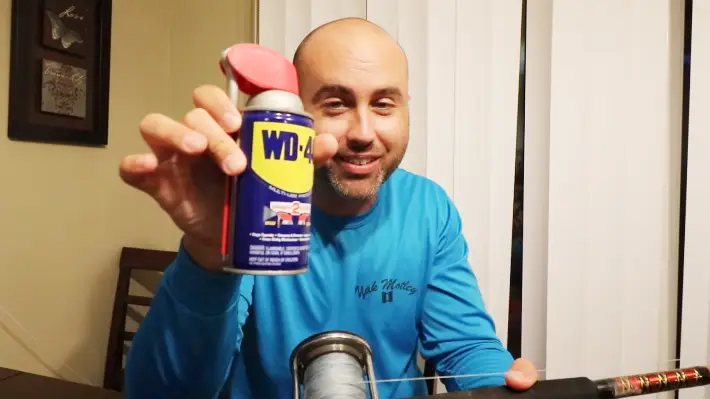
Using WD-40 as an attractant for fishing may be illegal in many places. The legality of using WD-40 for fishing varies depending on local regulations and restrictions. Consult local fishing laws and regulations before using any attractants or additives.
Artificial attractants like WD-40 may be illegal in some places due to environmental concerns, fish populations, or natural feeding patterns. These regulations are implemented to protect fish populations and maintain the ecological balance of aquatic ecosystems.
Cast Your Lines Responsibly and Protect Precious Marine Resources
The use of WD-40 as a lure for fishing is a highly debated topic among anglers. While some believe it can successfully attract fish, this product’s potential environmental and ethical impacts are significant. Not only can it harm aquatic life and ecosystems, but it may also be illegal in some states due to fishing regulations.
Instead, opt for natural bait and attractants specifically designed for fishing. Remember, preserving the delicate balance of aquatic ecosystems is vital for the long-term sustainability of our fisheries.

